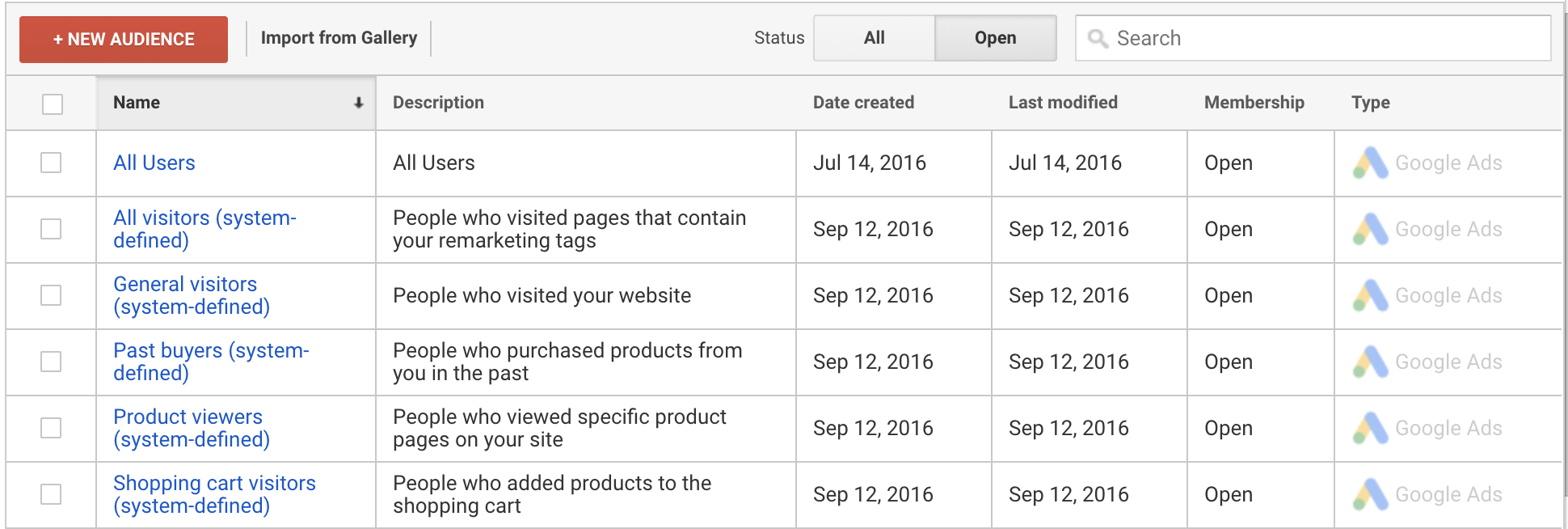A Total Guide to Remarketing In Google Analytics
A Total Guide to Remarketing In Google Analytics
Blog Article
Optimize Your ROI With Remarketing in Google Analytics
In the world of electronic advertising and marketing, the utilization of remarketing techniques within Google Analytics has actually confirmed to be a potent tool for enhancing return on investment. By utilizing the power of individual information and customizing advertisements to particular audience sections, services can substantially magnify their conversion rates. Nevertheless, the genuine essential depend on the art of accuracy - comprehending individual habits, crafting compelling ads, and continuously refining strategies to drive optimal outcomes. The journey to taking full advantage of ROI through remarketing is a nuanced path paved with understandings and chances that can reshape the trajectory of your advertising and marketing undertakings.
Understanding Remarketing in Google Analytics
Comprehending remarketing in Google Analytics is important for maximizing your digital advertising and marketing method. Remarketing allows you to target customers who have actually previously seen your website or connected with your app, offering them with tailored advertisements as they browse other sites or make use of other applications within the Google Show Network. This technique aids keep your brand name top of mind and encourages individuals to return to your website, ultimately raising the possibility of conversion.
By using Google Analytics, you can track the efficiency of your remarketing campaigns, gaining useful insights into individual actions, engagement, and conversions. This data enables you to improve your bidding, messaging, and targeting methods to boost the overall efficiency of your projects.
Furthermore, comprehending the different kinds of remarketing listings offered in Google Analytics, such as typical, dynamic, and similar audiences, allows you to create customized and very fractional projects customized to particular customer sections. This level of granularity can considerably boost the importance and impact of your remarketing efforts, ultimately maximizing your roi.
Establishing Up Remarketing Checklists
To effectively execute remarketing campaigns in Google Analytics, the initial action entails developing and setting up remarketing checklists targeting specific individual segments based on their interactions with your website or app. By establishing up remarketing listings, you can tailor your marketing initiatives to get to individuals who have actually already shown passion in your items or services.
To begin, browse to the Admin section of your Google Analytics account and select the Building where you desire to create the remarketing checklist. Under the Building column, click on 'Audience Definitions' and pick 'Audiences.' Next, click on the red 'New Audience' switch and select 'Produce New' to define the specifications for your remarketing list.

Crafting Reliable Remarketing Ads

When crafting your advertisements, concentrate on creating eye-catching headlines and engaging visuals that stand out to potential clients. Integrate strong calls-to-action that motivate users to revisit your website and finish a wanted activity. Make use of vibrant remarketing to reveal tailored ads including products or solutions that users have formerly seen on your website.
In addition, make certain that your advertisements are mobile-friendly given that a substantial section of internet traffic comes from mobile phones. Test different advertisement variants to identify which styles and messages drive the finest results. By continuously refining and optimizing your remarketing advertisements based on performance data, you can optimize their performance and enhance your return on financial investment.
Analyzing Remarketing Efficiency

Via Google Analytics, marketing professionals can track the performance of their remarketing projects in real-time, allowing them to recognize fads, patterns, and locations for enhancement quickly. By evaluating the data, marketers can establish which advertisements are executing well, which audience segments are reacting favorably, and which networks are driving the most conversions. This degree of granularity allows online marketers to make data-driven decisions to maximize their remarketing advocate far better results.
Enhancing ROI With Remarketing
Assessing remarketing information in Google Analytics makes it possible for marketers to identify chances for maximizing return on financial investment (ROI) via calculated modifications - What Is “Remarketing” In Google Analytics?. To make best use of ROI with remarketing, it is critical to understand the actions of your audience. By assessing user interactions, such as the pages they checked out, the items they viewed, or the activities they handled your website, you can tailor your remarketing campaigns a lot more efficiently
Segmenting your target market based on their behavior permits you to develop customized and targeted advertisements that are much more most likely to reverberate with them. By showing appropriate advertisements to specific sections of your target market, you can boost the possibilities of conversion and eventually improve your ROI.
Additionally, testing different ad creatives, messaging, and offers can aid determine what reverberates finest with your target market. A/B testing enables you to experiment with go to website different elements of your advertisements to determine what drives the highest possible interaction and conversion prices.
Verdict
To conclude, making best use of ROI with remarketing in Google Analytics needs a strategic approach to examining user actions, segmenting target markets, creating tailored advertisements, and optimizing campaign performance. By leveraging data-driven understandings and testing various approaches, services can enhance their remarketing initiatives to drive higher involvement and conversion rates. This methodical technique makes certain that resources are successfully allocated Website in the direction of maximizing rois in remarketing projects.
Next off, click on the red 'New Target market' button and choose 'Produce New' to specify the parameters for your remarketing checklist.
By constantly refining and maximizing your remarketing advertisements based on performance data, you can optimize their efficiency and enhance your return on financial investment.
By delving into these understandings, marketing experts can get a thorough understanding of how their remarketing efforts are resonating with their target audience and driving conversions. To maximize ROI with remarketing, it is critical to recognize the habits of your audience.In conclusion, making the most of ROI with remarketing in Google Analytics calls for a critical method to assessing customer actions, segmenting audiences, producing tailored ads, and maximizing project efficiency.
Report this page